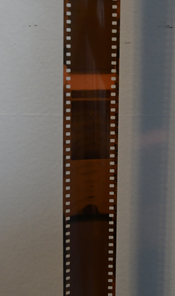dearcomposer
Member
Hey y'all,
I've just finished developing a roll of Kodak GC 400 - 24 frames. It is an older roll, and the friend who shot the roll is very inexperienced (shooting on Auto on a borrowed Minolta X-700).
However, I fear the issue was caused in the development stages. There seem to be about 1.5 frames that came out okay, then half a frame is a pink line, then 3 frames greyed out, as if they didn't receive any development chemicals. It loops in this pattern, but the pattern is not lining up with my Paterson Reel (in other words, the length of the pattern is a bit longer than one spool of film wound in the reel), which makes me thing something else is going on.
Hoping anyone has any insight so I can not make this mistake again. Or maybe, if this is just some sort weird expiration pattern? I'm a bit stumped.
I developed using fresh CineStill C-41 chemistry, in my paterson reel tank.
Attached is a photo:
I've just finished developing a roll of Kodak GC 400 - 24 frames. It is an older roll, and the friend who shot the roll is very inexperienced (shooting on Auto on a borrowed Minolta X-700).
However, I fear the issue was caused in the development stages. There seem to be about 1.5 frames that came out okay, then half a frame is a pink line, then 3 frames greyed out, as if they didn't receive any development chemicals. It loops in this pattern, but the pattern is not lining up with my Paterson Reel (in other words, the length of the pattern is a bit longer than one spool of film wound in the reel), which makes me thing something else is going on.
Hoping anyone has any insight so I can not make this mistake again. Or maybe, if this is just some sort weird expiration pattern? I'm a bit stumped.
I developed using fresh CineStill C-41 chemistry, in my paterson reel tank.
Attached is a photo:













